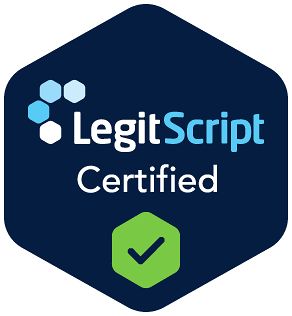Gabapentin: Misuse, Dependence, and Recovery Support
Gabapentin is a prescription medication approved for the treatment of seizures and nerve pain, but it is increasingly misused for its sedating and mood-altering effects. Although it is not classified as a controlled substance at the federal level, gabapentin is now considered a drug of concern due to rising reports of misuse, dependence, and overdose when combined with opioids or alcohol.
At Lifeline Recovery and Wellness in Malvern, PA, we offer outpatient services for individuals recovering from gabapentin misuse, with personalized care plans that support long-term recovery after detox and medical stabilization.
What Is Gabapentin?
Gabapentin, sold under the brand name Neurontin, is an anticonvulsant medication that affects the nervous system by altering how the brain responds to nerve signals. It is FDA-approved to treat:
- Seizure disorders
- Postherpetic neuralgia (nerve pain following shingles)
- Off-label uses include anxiety, insomnia, and fibromyalgia
Gabapentin’s effects on mood and relaxation have led to its misuse, especially in populations with a history of opioid or polysubstance use.
According to the Centers for Disease Control and Prevention (CDC), gabapentin was involved in nearly 10% of overdose deaths in some regions in recent years, often in combination with fentanyl or other sedatives.
Street Names for Gabapentin
Gabapentin is often referred to by informal or slang terms, including:
- Gabas, Gabbies, or Gabbys
- Johnnies
- Neurontin
- Pens
These names may vary regionally, and the drug is usually obtained through diverted prescriptions or online sales.
What Does It Look Like When Someone Is Using Gabapentin?
Gabapentin misuse can resemble benzodiazepine or opioid intoxication. Common signs of use or misuse include:
- Drowsiness or sedation
- Slurred speech
- Unsteady gait or poor coordination
- Dizziness or fainting
- Blurred vision
- Emotional detachment or dissociation
- Confusion or forgetfulness
- Increased tolerance or frequent dose escalation
In individuals using other substances, gabapentin may be taken to enhance or “potentiate” the effects, increasing the risk of overdose and medical complications.
What Does Gabapentin and Its Paraphernalia Look Like?
Gabapentin is typically dispensed in capsules, tablets, or oral solutions. Paraphernalia and use patterns may include:
- Blister packs or prescription bottles labeled “Neurontin” or “Gabapentin”
- Crushed pills or powder for snorting
- Empty capsule shells
- Pill crushers or altered capsules
- Online order receipts or unregulated foreign packaging
When misused, individuals may combine gabapentin with alcohol, opioids, or sedatives to increase intoxication, which can be dangerous.
How Do People Use Gabapentin?
While gabapentin is typically prescribed to be taken orally, people who misuse it may:
- Take excessively high doses
- Snort crushed pills or powder
- Combine it with opioids, benzodiazepines, or alcohol
- Use it to self-medicate anxiety or withdrawal symptoms
Repeated misuse can lead to dependence, especially with high or prolonged use.
What Is the Best Way to Quit Gabapentin?
Gabapentin should never be discontinued suddenly without medical supervision. High doses or long-term use can result in withdrawal symptoms, especially if taken with other central nervous system depressants.
The safest path to recovery involves:
- Medically supervised tapering of the dose
- Psychiatric support for anxiety or insomnia
- Cognitive Behavioral Therapy (CBT) and trauma-informed care
- Dual diagnosis treatment for co-occurring substance use or mental health disorders
- Group support and relapse prevention training
You can use the SAMHSA Treatment Locator to find detox or stabilization providers. Our team at Lifeline Recovery and Wellness is also available to help you connect to those services and begin your outpatient recovery.
What Does the from Gabapentin Look Like?
Gabapentin withdrawal can be uncomfortable and, in some cases, medically serious. Symptoms may appear within 12 to 48 hours of stopping use and can last over a week.
Typical Gabapentin Withdrawal Timeline:
- 12–48 hours: Anxiety, restlessness, insomnia, sweating, and headache
- Days 3–5: Peak withdrawal symptoms may include nausea, tremors, confusion, or agitation
- Days 5–7: Gradual improvement, though some psychological symptoms may persist
- Weeks 2–4: Ongoing recovery may include mood instability, cravings, and fatigue
For individuals with underlying mental health conditions, withdrawal may trigger flare-ups in anxiety or depression, making clinical support essential.
How Lifeline Recovery and Wellness Can Help
At Lifeline Recovery and Wellness in Malvern, PA, we offer a structured and compassionate approach to post-detox recovery from gabapentin misuse. While we do not provide detox services, we coordinate care with trusted providers and support your transition into long-term treatment.
Our programs include:
- Partial Hospitalization Program (PHP)
- Intensive Outpatient Program (IOP)
- Outpatient Program (OP)
- Individual therapy focused on trauma, anxiety, and emotional regulation
- Group therapy and peer support
- Relapse prevention and life skills training
- Medication management and psychiatric care
If you or a loved one is struggling with gabapentin misuse, contact Lifeline Recovery and Wellness today. We are here to help you take the next step toward sustainable recovery.

 Start Your Journey
Start Your Journey

